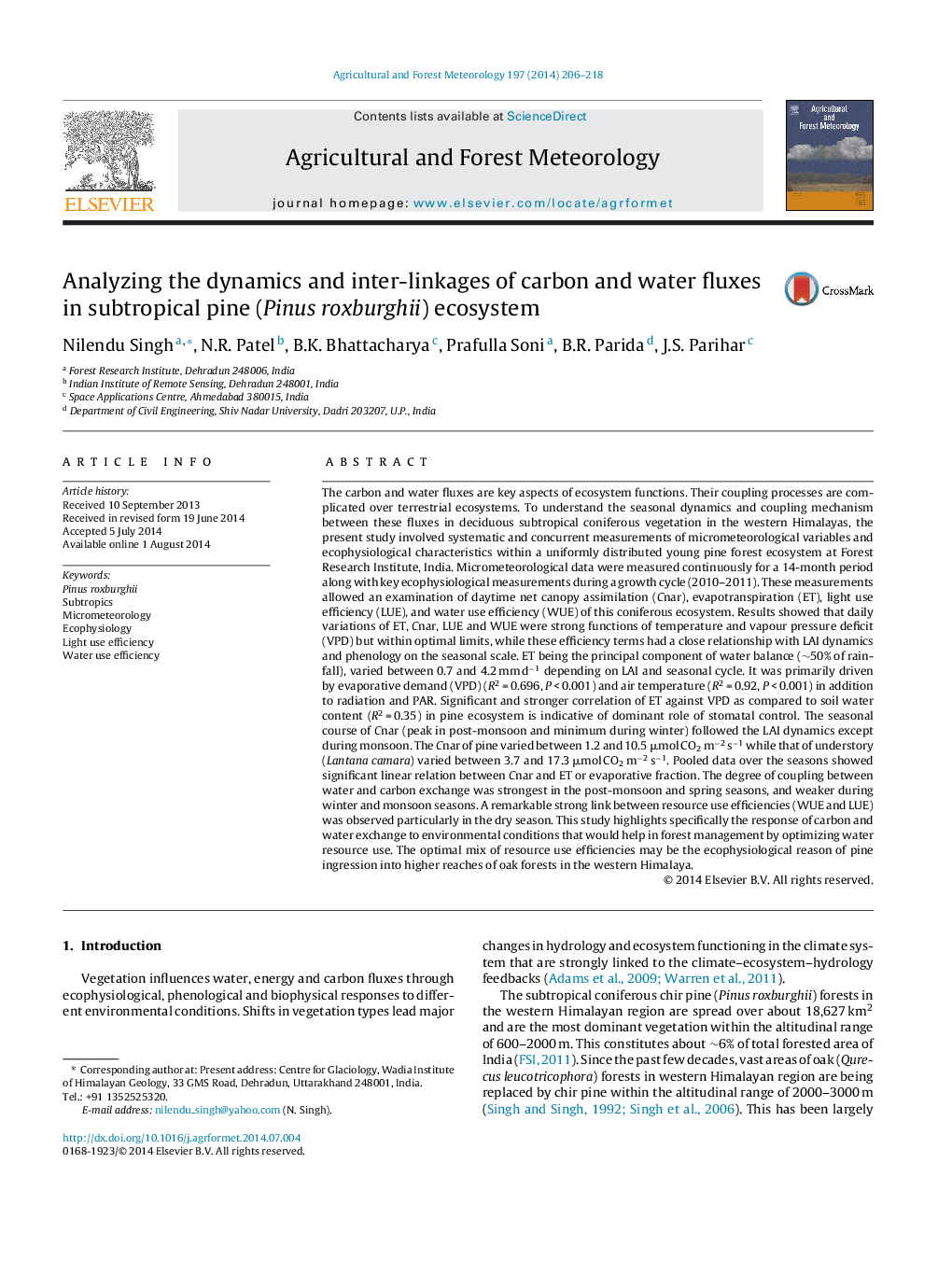| Article ID | Journal | Published Year | Pages | File Type |
|---|---|---|---|---|
| 81715 | Agricultural and Forest Meteorology | 2014 | 13 Pages |
•CO2–H2O exchange over deciduous pine forest of the western Himalayas was studied.•Phenology driven coupling of CO2 and H2O fluxes on temporal scale was analyzed.•Temperature has prime control on LUE and WUE in this energy-limited ecosystem.•The inter-relationship between resource efficiencies was quantified.•Study will be beneficial in Himalayas where flux-tower network is sparse.
The carbon and water fluxes are key aspects of ecosystem functions. Their coupling processes are complicated over terrestrial ecosystems. To understand the seasonal dynamics and coupling mechanism between these fluxes in deciduous subtropical coniferous vegetation in the western Himalayas, the present study involved systematic and concurrent measurements of micrometeorological variables and ecophysiological characteristics within a uniformly distributed young pine forest ecosystem at Forest Research Institute, India. Micrometeorological data were measured continuously for a 14-month period along with key ecophysiological measurements during a growth cycle (2010–2011). These measurements allowed an examination of daytime net canopy assimilation (Cnar), evapotranspiration (ET), light use efficiency (LUE), and water use efficiency (WUE) of this coniferous ecosystem. Results showed that daily variations of ET, Cnar, LUE and WUE were strong functions of temperature and vapour pressure deficit (VPD) but within optimal limits, while these efficiency terms had a close relationship with LAI dynamics and phenology on the seasonal scale. ET being the principal component of water balance (∼50% of rainfall), varied between 0.7 and 4.2 mm d−1 depending on LAI and seasonal cycle. It was primarily driven by evaporative demand (VPD) (R2 = 0.696, P < 0.001) and air temperature (R2 = 0.92, P < 0.001) in addition to radiation and PAR. Significant and stronger correlation of ET against VPD as compared to soil water content (R2 = 0.35) in pine ecosystem is indicative of dominant role of stomatal control. The seasonal course of Cnar (peak in post-monsoon and minimum during winter) followed the LAI dynamics except during monsoon. The Cnar of pine varied between 1.2 and 10.5 μmol CO2 m−2 s−1 while that of understory (Lantana camara) varied between 3.7 and 17.3 μmol CO2 m−2 s−1. Pooled data over the seasons showed significant linear relation between Cnar and ET or evaporative fraction. The degree of coupling between water and carbon exchange was strongest in the post-monsoon and spring seasons, and weaker during winter and monsoon seasons. A remarkable strong link between resource use efficiencies (WUE and LUE) was observed particularly in the dry season. This study highlights specifically the response of carbon and water exchange to environmental conditions that would help in forest management by optimizing water resource use. The optimal mix of resource use efficiencies may be the ecophysiological reason of pine ingression into higher reaches of oak forests in the western Himalaya.
